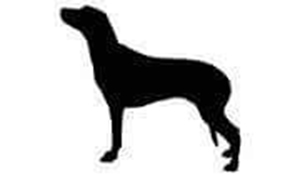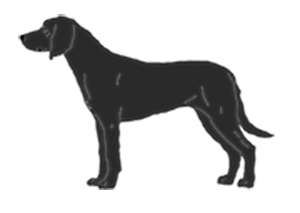Generally with the blog I try and make the focus more geared toward the Hamiltonstovare. I am going to try my very best and relate it to the experiences that I have with Hamiltosntovare and other breeds. As I have mentioned previously, there is a rescue problem with Hamiltonstovare. The problem is complex and will not be solved overnight.
Generally I think that there are a select few of rescues that are in it to help animals. I am sure that most started in order to help animals. However, rescue by nature should be focused on one primary goal and that is someday to close because the rescue problem has been solved. Most rescues do not operate that way at all, I think most municipal shelters try and run that way but the independent rescues do not.
The nature of rescues and shelters especially with dogs, can easily get fixed because they are spaying and neutering nearly every animal that comes in within 48 hours. Most dogs that are pets have never been around an intact dog, period. Some totals and estimates show that an alarming 75%+ of all dogs are spayed/neutered in America. There will be a serious shortage of dogs regardless of breed and situation within the next ten years just because there are so little that actually are allowed to reproduce. Shelters and rescues are already seeing shortages in their area and are regularly importing dogs from other states and even countries to meet the demand of a rescue dog.
Hamiltosntovare rescue is no exception, Ruger, Brutus, Renegade, and Eve are just a few examples of dogs that were transferred from one shelter to another. Ruger, Brutus and Renegade were transferred hundreds of miles across state lines from Virginia to New Hampshire or Massachusetts. Some will say as long as those dogs get great homes then what’s the issue. The issue is that you run the risk of transporting hidden diseases and also run the risk of people doing horrible things to make sure that dogs are rescued. Currently, the purebred dog fancy knows that there are several rescues around the country that will break into homes, walk on people’s property with the sole intention of stealing dogs just to meet the demand for a rescue. I have seen rescues make up sob stories to get a dog adopted faster (Renegade is an example, he was found with a number dyed on his side, the rescue said it was chemically burned there but myself and the shelter know that it was done with a pet safe bleaching agent done for the purposes to identify the dog in a field trial.) I have also seen rescues lie about a breed and say that a breed is one thing instead of another to get it adopted faster, and I have also seen rescues intentionally lie about where a dog was found in order to make sure that the original owners never find it.
What most people do not know is that Animal Rights is not something that any dog person should ever support. Animal Rights is a movement supported by PETA, HSUS and ASPCA that want to end all pet ownership. Animal Rights tries to push for donation money in order to push legislation that will make sure that pet ownership is eliminated. Those main groups also make sure to give money to owners of privately owned rescue groups that are local lobbyists. So those rescue dogs could mainly just be a method to prove that the lobbyist isn’t the scum of the earth and has a heart. In my state, Virginia, that is going on very heavily. The Richmond SPCA is run by a person who is a lobbyist and is funded by the HSUS. The person that runs the Richmond SPCA left her own dog in a hot car and let it die but yet people adopt hundreds of animals from them every week.
One experience that I had with a rescue personally proved to me that every person who decides to adopt a dog needs to do their research, visit the facility, ask about prior care and even ask about financial returns versus profit returns. Most rescues should be a 501(c)3 non-profit organization so they should not show a profit, nor should they over-pay their associates to make sure that they don’t turn a profit. My fiancé worked at a big-name pet retailer for years and this retailer had an agreement with a rescue to allow adoptions to take place one day a week. So when a litter of 3 week old kittens was found, abandoned they contacted that rescue. That rescue made no effort to ensure that the kittens that weren’t weaned were picked up and given emergency treatment. So my fiancé brought one of the kittens home as no rescue group was willing to take them. Several associates took one kitten each home that night. Our male kitten was covered in fleas, eyes were still blue, could barely walk and barely had teeth. So we immediately crafted a natural flea treatment, started him on a milk replacer/wet food combination and took over the role of mother cat to him. He was too weak to be transported back to the store but others brought their kittens in. The rescue arrived and immediately started threatening my fiancé because they said that he stole their kitten and demanded a $100+ adoption fee and application for the kitten that was never in their possession. He refused and legally there was nothing that the rescue could do. The little kitten had a few set-backs at first but after a week he began to grow and grow. He has stayed with us ever since and he will be 2 years old in a few months. That same rescue is still in operation today but no longer has an agreement with that retail store because they were placing unvaccinated animals up for adoption, arriving late to the store, and kept the animals in a horrible condition.
The term retail rescue is going around the dog fancy right now and most people in the dog fancy agree that it happens, a lot. I see it with my involvement with Hamiltonstovare rescue. I sent an email to a rescue in Virginia Beach just requesting more information about a few dogs. I can almost guarantee that I will not hear from them and I am almost certain that these dogs will be adopted quickly because of the rare breed interest. To me what sends up red flags regarding a rescue is one that conducts adoptions in a retail store, has discounted adoptions around holidays, and boasts about numbers adopted. Most adoptions done at a retail store are impulse adoptions and are designed to prey on people who like the cute animal in a window, most of the time there is an application done but never a home visit and are more concerned about the check clearing than anything else. Rescues that boast about numbers, like a local rescue adopted out 200+ dogs in 2 days, etc., no way have the ability to make sure that every home is just right, let alone do home visits and follow-up checks.
However, these rescues are the first ones to vilify breeders and call us greeders. They also will spread around such catch phrases as “adopt don’t shop”. Most responsible breeders never turn a profit in the amount that these rescues are. Most responsible breeders perform follow ups for each puppy sold for the puppy’s entire life. I know that my puppy owners made their choice and decision based on research, communication and are willing to build a relationship with me. I pride myself on being their SME with their puppy. I do not know of a single rescue or shelter that is willing to put in that kind of dedication for each dog that they adopt out. I am in no way saying that all rescues and shelters are bad but what I am saying is that regardless of how a person decides to get their next pet, that research is required.



